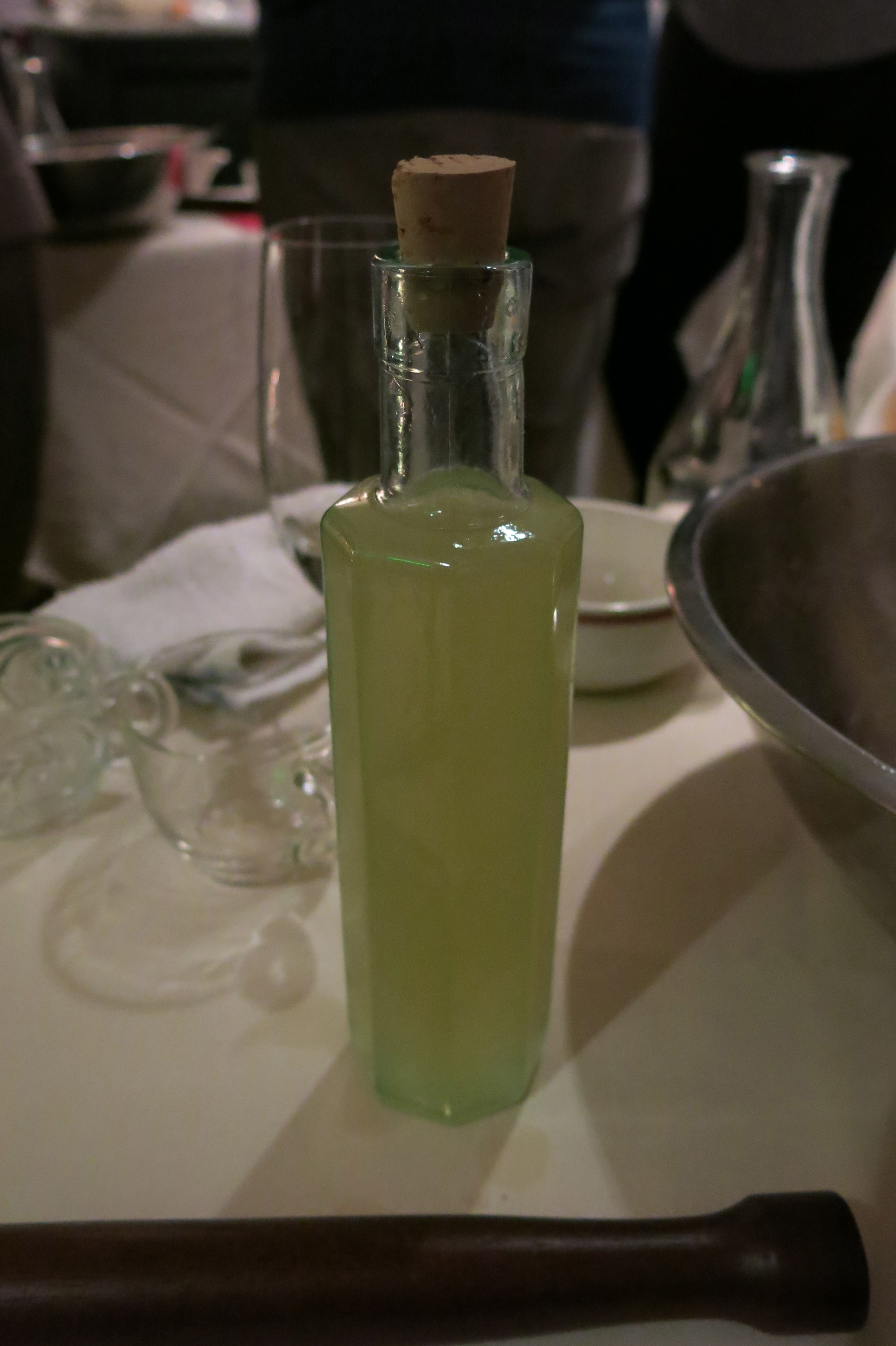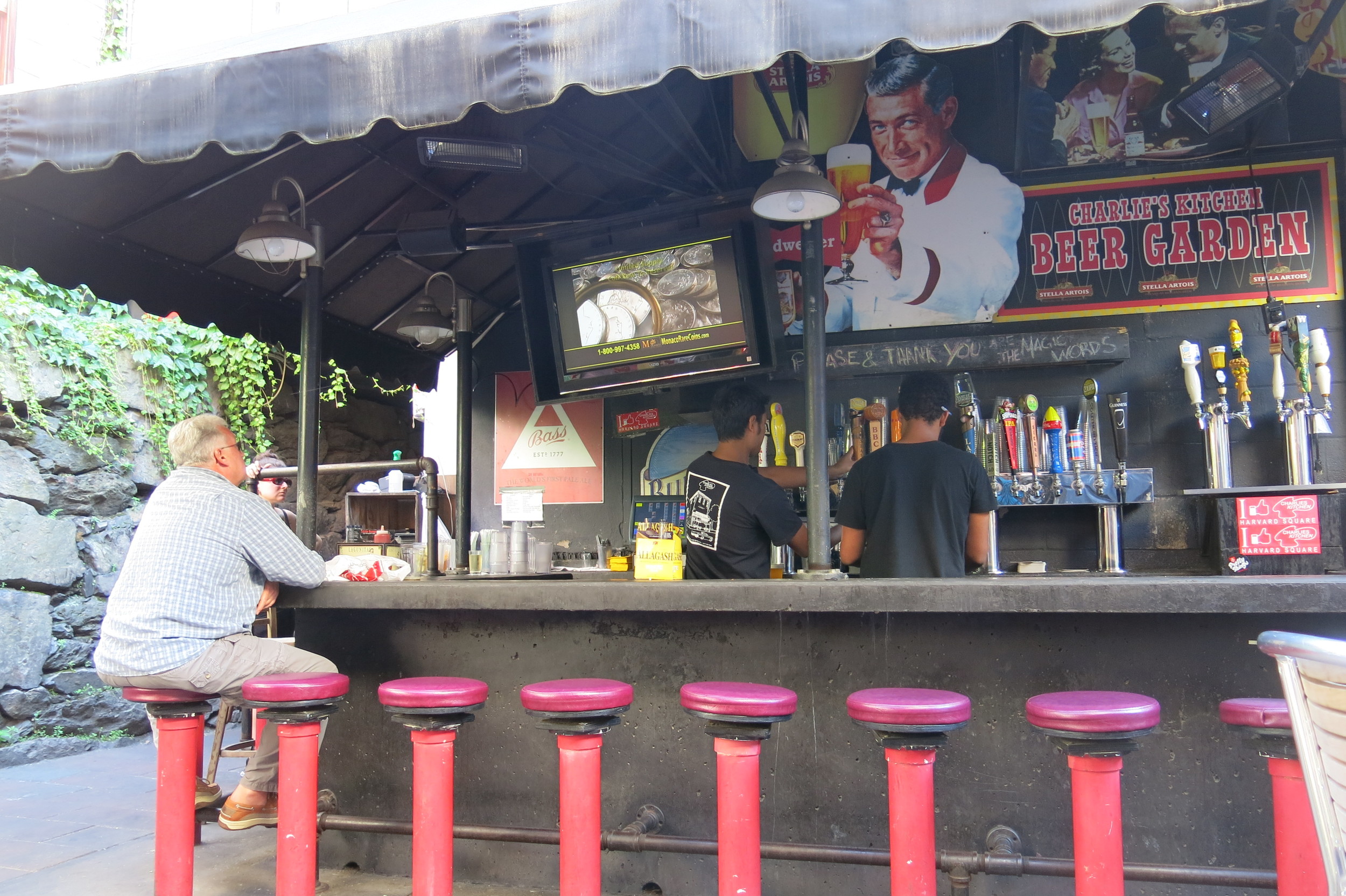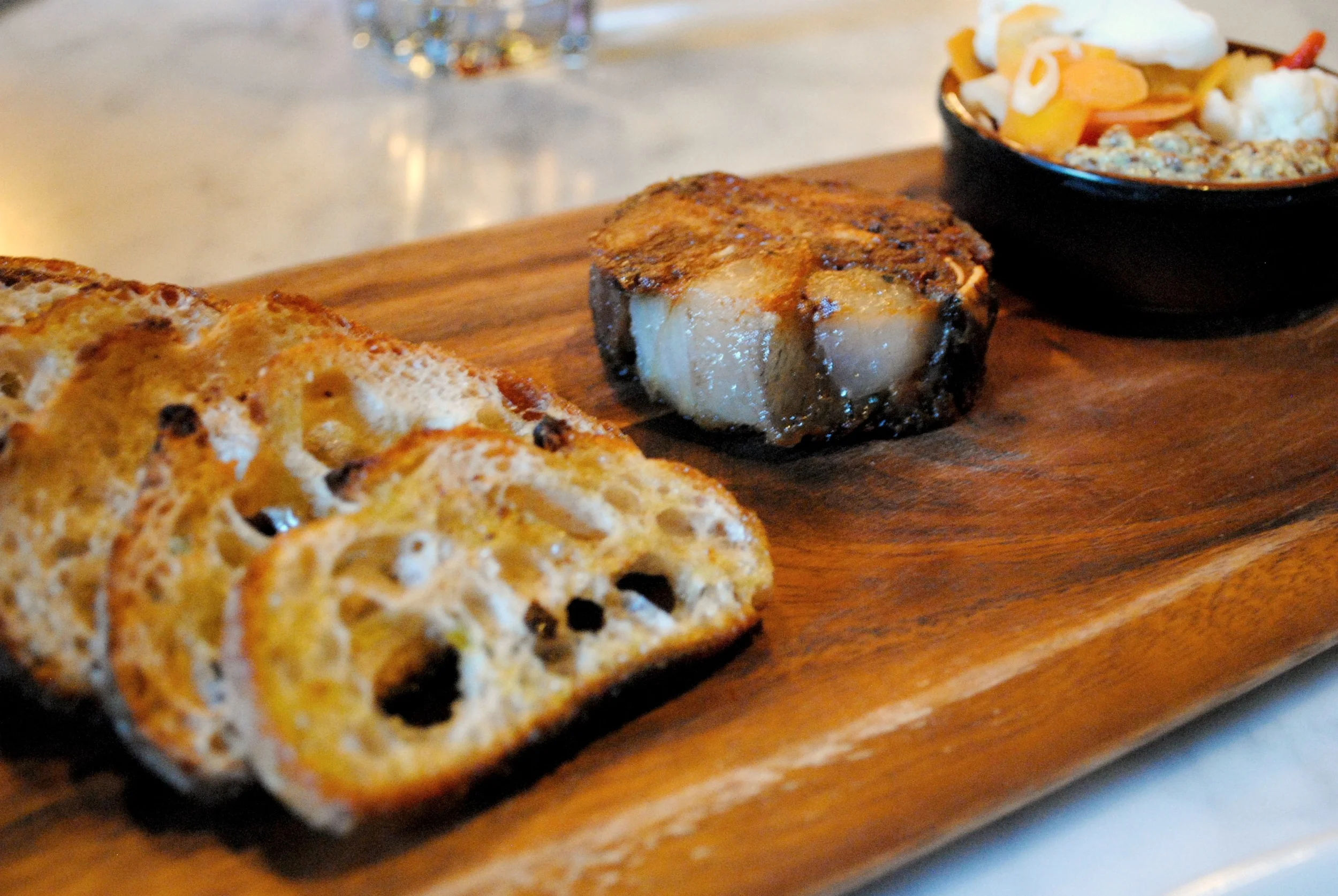It would be difficult to overstate Eastern Standard’s contributions to Boston’s drinking culture. Since its opening nearly 10 years ago, the Kenmore Square bar and restaurant has helped set the tone for craft cocktails in the city by reinterpreting classic drinks through a modern lens, unearthing age-old recipes and techniques, and of course, creating innovative original cocktails with a broad array of quality spirits and fresh ingredients. The bar attracts top talent, serves as a launch pad for respected mixologists who go on to open their own bars, and remains a cocktail destination in a neighborhood better known for baseball and beer. So when Eastern Standard offers a day’s worth of seminars on topics like how to create original cocktails, make French pastries, and identify subtle aromas in wine, you’d be wise not to miss class.
Now in its second year, “Standard Education” is a chance for food and drink lovers to go behind the scenes at Eastern Standard and pick up a few tips from the pros. Those looking to beef up their personal hospitality game had a series of four 60-minute interactive classes, appropriately subtitled “It’s All in the Details,” to choose from. The day began with a lesson on how to make “flawless” French macarons, taught by Eastern Standard pastry chef Lauren Kroesser, and continued with a class on creating original cocktails, led by beverage programs liaison Bob McCoy.
Figuring that drinking and learning isn’t a bad way to spend a day, I attended a couple of afternoon and evening classes and was happy to pick up a few pointers from some of the best in the business.
“Scents” Memory: Bridging the Gap Between Wine Aromatics and Grape Varietals Through Olfactory Exploration
I experience the most remarkable phenomenon every time I smell rosemary. One whiff of this fragrant herb, and suddenly I’m a kid again, standing on my cousins’ front doorstep on Christmas morning. My aunt opens the door, and the first thing I’m aware of is the unmistakable aroma of my uncle’s cooking. My uncle was a fantastic cook, and if there was anything that could compare with the thrill of tearing open presents and emptying stockings in front of the fireplace, it was my uncle’s Christmas dinner. The feast would be in the works when I arrived, and despite the countless aromas that must have been wafting out from the kitchen, the one that always stood out for me was rosemary.
As a child, I can’t say I had any particular knowledge or affection for rosemary; it was only as an adult, when I got into cooking, that I began to associate the herb’s aroma with a specific, vivid memory. But the scent of that herb, and the personal experiences that accompany it, are embedded deep in my psyche, and with just one sniff, I can summon the warmth of my aunt and uncle’s home, the unbridled excitement of Christmas morning, and the joy of spending the holiday with my family.
That’s what Colleen Hein, Eastern Standard’s wine director, calls “scents” memory – the power of a certain aroma to transport you to a time, place, or episode from your past. Her class was geared toward teaching us to appreciate the power and sensitivity of our sense of smell, build a “memory database” of different aromas, and learn to identify those scents and flavors in wine.
Before class began, attendees had a chance to peruse an aroma kit arranged on a table at the front of the room. This collection is meant to help isolate certain scents and create a language for discussing and enjoying wine. The items range from the aromatic, like lavender; to nostalgic, like apple pie; to the unexpected – like a boot and a glue stick.
After sniffing around the menagerie of aromatic articles, we moved on to the wine. Set before each attendee was a series of five glasses of wine – three whites, two reds, but no other identifying features. Colleen asked us to sniff each wine and jot down our impressions of the aromas. The goal wasn’t necessarily to pinpoint every flavor in the glass or try to guess what kind of wine it was, but more to respond to the aromas, identify what we could, and see whether the aromas triggered any images or memories for us.
I can’t say I had any revelations, but I did manage to pick out a few scents among the wines, like apricot, pear, and tobacco. Given how animated some of my classmates got over their discoveries, though, I was beginning to question my nose’s effectiveness.
The second exercise served only to confirm my fears.
Colleen passed around a series of five kitchen shakers, each filled with an aromatic substance that we were supposed to identify. I struggled to figure out the first scent, finally settling on “chocolate cake mix.” Turned out to be toasted brioche. For a shaker that contained lime, I offered the incisive comment “some fruit.” At least I was in the ballpark with that one, which is more than I can say for the container filled with green pepper and pencil shavings. My interpretation? “Wet something.”
There was one shaker for which I couldn’t even hazard a guess, but since it turned out to be black olives, I’ll give myself a pass; I detest olives and rarely have occasion to smell them. I did manage to correctly recognize the smell of honey, but it’s safe to say I won’t have any winemakers asking me to help them pen descriptions for their labels anytime soon.
Despite my olfactory inadequacy, I found some measure of redemption in the third exercise, going three for five when asked to match the aromas in the canisters to the grape varietals in the wine. And when Colleen unveiled the mystery wines we’d been sampling, I realized I’d correctly identified one of them as a Sauvignon Blanc. (That doesn’t exactly make me the Sherlock Holmes of wines, since Sauvignon Blanc is my favorite type, but I’ll settle for a moral victory.)
So a career as a sommelier probably isn’t in my future, but my takeaway from Colleen’s class is that a wine’s aroma can be as important as its taste, and it’s worth paying attention to. Every person perceives aromas differently, but having a common language to discuss a wine’s character and complexity offers another way to truly share a bottle.
Before moving onto the second class, I suppose I should attach a brief postscript to the aforementioned anecdote about my “scents memory” of rosemary. My uncle passed away about six years ago, but before he did, I made a point of telling him that his use of rosemary in his cooking triggered the warmest, most profound memory for me. And you know what he told me?
That he rarely, if ever, cooked with rosemary.
Maybe I was smelling the Christmas tree.
* * * * * * * * * * * * *
Punches for Parties
Making a punch is an efficient way to serve drinks to your guests. Of course, punch has different connotations depending on your age and maturity level. There’s the kind of punch you see at kids’ birthday parties, a sugary mix of fruit juices and sherbet. Punches for the college sect are similar – just swap out the sherbet for a handle of vodka. Then there’s the traditional definition of a punch – a five-component beverage dating back to 17th century, when sailors in the British East India Company brought the concept back from India. You can probably guess which version you’ll find at Eastern Standard. (No, not the second one.)
“Punches for Parties,” led by Eastern Standard bar manager Naomi Levy and held in the comfortable confines of the adjacent Hawthorne bar, offered a brief history of punch and a hands-on lesson in how to make a couple of recipes used at the bar.
Dating back nearly four centuries, punch is a communal drink that pre-dates the standalone cocktail and requires five ingredients: booze, citrus, spice, sugar, and water. That’s a basic recipe with a lot of flexibility, and punch has been subject to near-infinite variations in its long history.
One creative and effective way to get two of those ingredients in there is by making oleo-saccharum. It’s fairly straightforward – according to Eastern Standard’s recipe, peel three lemons and one orange, and combine with six ounces of sugar in large bowl. With a muddler, you mash the peels into the sugar until the sugar is damp with the oil from the fruit. Then you let it sit for anywhere from 30 minutes to a few hours.
While our oleo-saccharum rested for a bit, we watched while Naomi demonstrated the rediscovered art of making a clarified milk punch. Milk punch is an Eastern Standard specialty that has its roots in the 18th century and has enjoyed a surge of popularity in recent years. In the most basic terms, making a milk punch involves heating milk to 180 degrees; combining it with a mixture of booze, citrus, and simple syrup; letting it curdle; and then straining it until the punch is clear. Then it’s just a matter of convincing people who aren’t accustomed to hearing the words “milk” and “punch” used in the same phrase that it’s actually much better than it sounds.
That shouldn’t be too hard with this recipe. While the process of making a milk punch can occupy an entire day (the straining takes a while), Naomi managed to speed things up for demonstration purposes. After lots of heating, pouring, and straining, this bourbon-based milk punch was astonishingly clear, with a silky texture and a remarkable blend of rich, sweet, and spicy flavors. A maple-thyme simple syrup added an especially nice touch. And since milk does a body good, you can always justify a second glass.
After polishing off some milk punch, it was time to revisit our oleo-saccharum. Having sat for a half-hour, it yielded a sweet, citrusy oil, to which we added six ounces of fresh lemon juice. After stirring to dissolve the remaining sugar and removing the peels, we had a sweet mixture that would factor into the Eastern Standard Tea Punch (actually, we got to bottle ours and take it home while Naomi did the heavy lifting).
This punch is a lot less labor-intensive than the milk punch and probably a little more approachable. It involves combining VSOP brandy, Appleton Reserve rum, Rooibos tea, the lemon juice and oleo-saccharum mix, and water.
If you have any huge, industrial-cut, perfectly clear ice cubes kicking around, adding them to the punch bowl will impress your guests (and chill the punch, of course).
There was plenty of both punches to go around, so we all helped ourselves to a second glass while chatting among ourselves and pelting Naomi with questions. And I realized that this traditionally communal drink was doing exactly what it was intended to do – foster a convivial atmosphere and promote conversation among a group of strangers. Even after 300+ years, a good punch still does the trick.
* * * * * * * * * * * * *
Approachability has long been one of Eastern Standard’s hallmarks. Its beverage program attracts plenty of cocktail connoisseurs with adventurous palates, while its proximity to Fenway Park draws game-day crowds that probably aren’t coming in for the milk punch. I imagine it’s a bit of a balancing act, but Eastern Standard maintains the broad appeal of a neighborhood bar and restaurant.
The staff’s willingness to interact with customers and share their expertise serves as another example of that accessibility. For now, Standard Education remains a one-day annual event, so class won’t be in session again until next winter. But you can discover something new anytime you visit.
* * * * * * * * * * * * *
Copyright © Boston BarHopper. All Rights Reserved.





















































